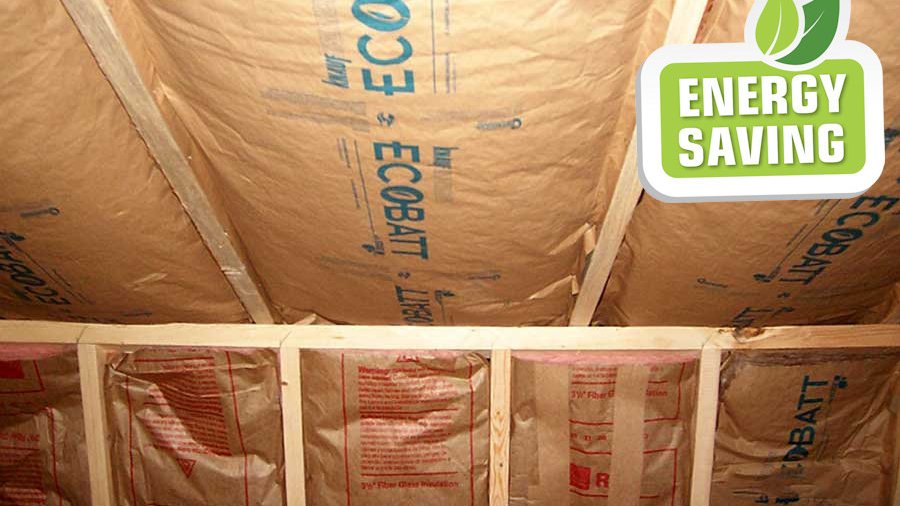Insulation can be a highly effective way of reducing energy consumption in your home.
What insulation does, is reduce the exchange of heat via surfaces in homes like ducts, walls, attics, or roofs. When a building is well-insulated, less amount of warm air escapes out of the house during winter, while less cool air goes out of the home during the summer. This ultimately helps in the reduction of the amount of electrical energy required for cooling your home during the summer and heating it during the winter. Apart from that, improving the insulation in any living structure can lower your annual cooling and heating bills by 20 percent.
Additionally, insulation will maintain your home’s energy envelope. What does this mean? When your home’s energy envelope is well maintained, your personal comfort levels will improve because your cooling and heating bills will go down drastically. If your electrical energy costs are outrageous, then insulation is something you should look to implement in your home.
Most of the heat emitted from your home escapes through the ceiling (about 60 percent of it). Adequately managed insulation can reduce this heat loss significantly. In moderate climates, the R-38 insulation is needed. In extreme climates, R-60 is necessary. You might not have the appropriate insulation to meet the new requirements as the weather changes. So it is essential to check with the housing department in your region to determine the proper R-value for your house. How can you insulate various parts of your home? Read on and learn more.
Insulating Floors, Walls, and Attics
Additional insulation to your floor, walls, and attics is essential to saving on your energy expenses yearly. The outer envelope or shell, of every home, is the barrier in between the inner temperature and outer one. It prevents the equalization of the temperature of the outside and inside air. The better insulated the floors, walls, and roof are, the less energy your cooling and heating air conditioning unit will consume. The system will help to regulate the flow of warm and cool air into the home. Since heat rises, by insulating your roof you will be able to successfully keep the warm air inside during the colder climates.
Sealing Air Leaks
It is essential to ensure that all air leaks in your home are sealed. Because even walls that have been well insulated can let cool or warm air escape through any gaps or cracks around your doors and windows. Drafty houses typically require more power to produce heat and cool air than tighter homes. So why not save energy by caulking or weather-stripping to seal any air leaks. In older buildings, it is very difficult and even impossible sometimes to seal the home too tightly. In fact in most cases, due to the construction techniques used when the house was erected, there will be enough fresh air flowing in which will ultimately help to maintain good ventilation when the sealing of all leaks has been accomplished.
Insulating Ducts
Insulating your ducts is a perfect way to save your energy bills. In houses that come with central air conditioning and heating units that force air out through a duct system, a leaking duct can lower the efficiency of energy saving by 20 percent. So why not seal and insulate all the ducts insights your home to let both the cool and warm air get to where it is supposed to go. This is done as efficiently as possible. Adequate insulation of your ducts is even more essential when the tubes in your house travel through defective parts of the property like attics or basements. Seal the insulated areas around the registers. This keeps air from leaking out under the floor or behind the wall.
Reflective Insulation
Reflective insulation is also essential to the flow of warm and cool air into the home. It is most useful in the attic. While most methods of insulation reduce the transfer of heat by physically blocking it, in reflective insulation, also known as a radiant barrier, the insulation is to be installed on the floor of the attic. This is where it reflects heat that is radiated into the attic via a hot roof and stops it from entering the space below. It is paramount to indicate that while reflective insulation is known to have some value in reducing your heating bills, its primary purpose is to keep your home cool during hot climates. It will balance your home’s energy envelope.
Bottom Line
Adding more insulation to your home will help you save greatly on your energy bills. From the above, it will let you save on your annual electricity bill by 20 percent. The different areas that can be insulated in your home have been highlighted above. It is a fairly straightforward process. However, there is one hiccup which is safety. Protecting yourself when adding more insulation to your home is arguably one of the toughest parts of the job.
Even if you are a handyman, you need to be careful because insulation can contain fiberglass, insect repellents, fire retardants, and other substances you do not want to come in contact with. For this reason, whenever you are working with any kind of insulation, it is essential to protect yourself by putting on long sleeves and pants, with gloves, full goggles, and a respirator. Your safety should be your top priority.









